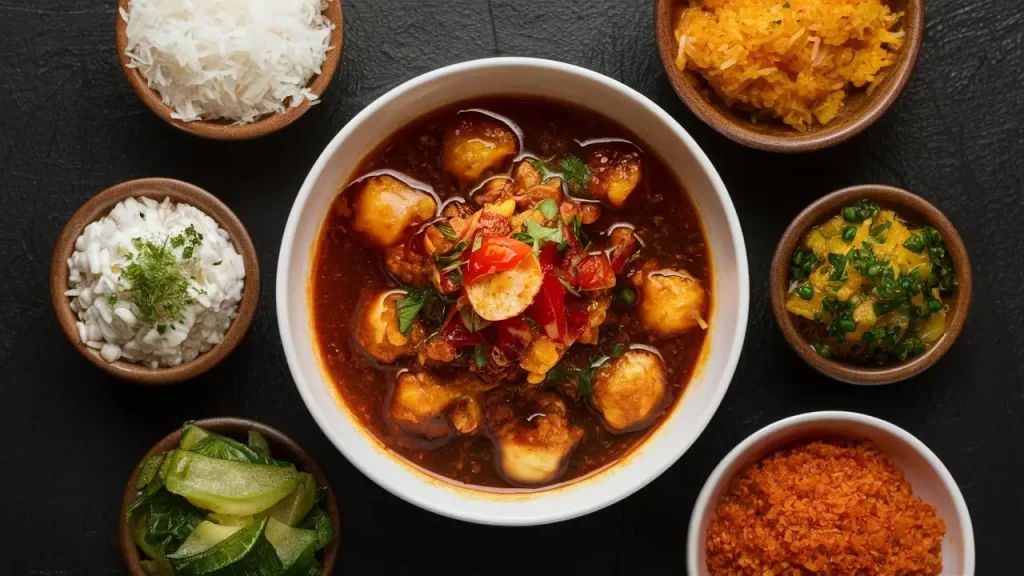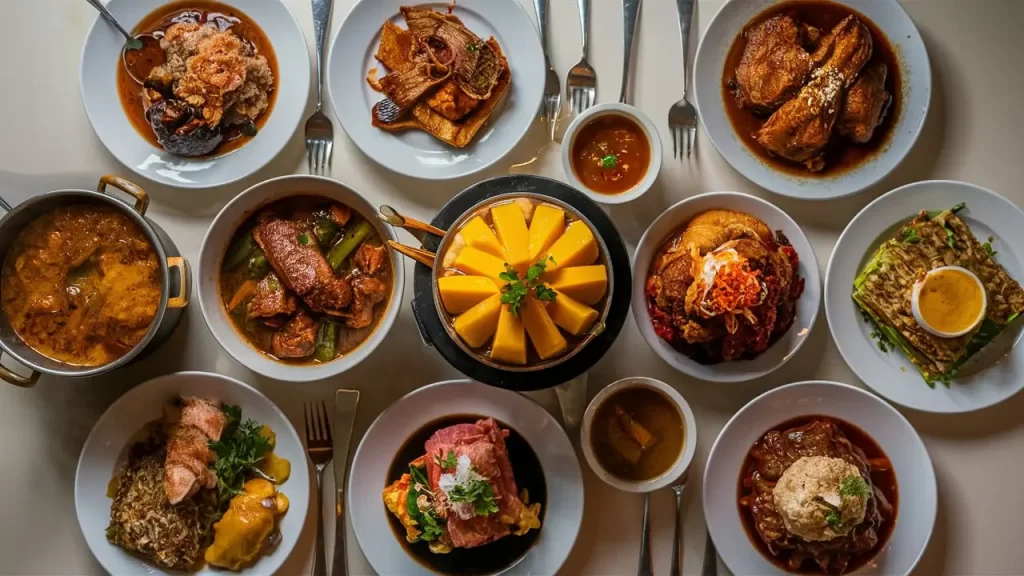Filipino food dishes are a delightful blend of rich flavors and unique textures. Known for their savory, sweet, and tangy taste profiles, these dishes offer an irresistible culinary experience. In this article, we will explore some of the most popular Filipino food dishes, diving into their ingredients, preparation methods, and cultural significance. Let’s embark on this flavorful journey and discover what makes Filipino cuisine so special.
The Essence of Filipino Cuisine

A Melting Pot of Influences
Filipino food dishes are a true reflection of the country’s diverse cultural history. Influences from Spanish, Chinese, American, and indigenous Filipino cuisines have come together to create a unique and flavorful cuisine. This melting pot of flavors is evident in the wide variety of dishes available across the Philippines.
Core Ingredients
The core ingredients in Filipino food dishes include rice, coconut, fish, pork, chicken, and an array of tropical fruits and vegetables. Seasonings such as vinegar, soy sauce, garlic, and ginger are commonly used to enhance the flavors. These ingredients form the foundation of many traditional Filipino recipes.
Must-Try Filipino Food Dishes

Adobo: The National Dish
A common belief is that adobo is the national dish of the Philippines. This savory stew is made with pork or chicken marinated in vinegar, soy sauce, garlic, and bay leaves, then simmered until tender. The result is a flavorful and tangy dish that pairs perfectly with steamed rice.
Sinigang: A Comforting Soup
Sinigang is a popular Filipino soup known for its sour broth. It is typically made with pork, shrimp, or fish and a variety of vegetables like tomatoes, radish, and okra. The tart flavor comes from tamarind, which gives the soup its distinctive taste. A filling and hearty dish ideal for rainy days is singing.
Lechon: The Celebration Roast
Lechon is a whole roasted pig, traditionally served during celebrations and special occasions. The pig is marinated, stuffed with herbs, and roasted until the skin is crispy and golden brown. The succulent meat and crispy skin make lechon a beloved dish at Filipino feasts.
Pancit: Stir-Fried Noodles
Pancit refers to a variety of Filipino noodle dishes, with Pancit Canton and Pancit Bihon being the most popular. These stir-fried noodles are mixed with vegetables, meat, and seafood and seasoned with soy sauce and citrus. Pancit is often served at birthdays and celebrations, symbolizing long life and prosperity.
Sweet Filipino Treats

Halo-Halo: A Festive Dessert
Halo-Halo is a colorful and refreshing Filipino dessert made with shaved ice, sweetened beans, fruits, and jellies and topped with a scoop of ice cream. The name “halo-halo” means “mix-mix,” which reflects how the dessert is enjoyed. To beat the tropical heat, this treat is ideal.
Bibingka: A Festive Rice Cake
Bibingka is a traditional Filipino rice cake made with rice flour, coconut milk, and eggs. It is baked in a banana leaf-lined pan and topped with butter, sugar, and sometimes salted egg or cheese. Bibingka is commonly enjoyed during the Christmas season.
Street Food Delights
Balut: The Adventurous Snack
Balut is a fertilized duck egg with a partially developed embryo, boiled and eaten in the shell. It is considered a delicacy and is often sold by street vendors. Balut is a popular late-night snack and is known for its rich and savory flavor.
Isaw: Grilled Intestines
In the Philippines, street food, known as “isaw,” or grilled chicken intestines, is quite popular. The intestines are cleaned, marinated, and grilled to perfection. They are typically served on skewers and enjoyed with a dipping sauce made of vinegar and spices.
Tips for Enjoying Filipino Food
Embrace the Bold Flavors
Filipino food dishes are known for their bold and complex flavors. Don’t be afraid to try dishes with strong flavors, such as sour sinigang or tangy adobo. These flavors are what make Filipino cuisine unique and memorable.
Pair with Rice
A mainstay of Filipino cooking, rice is frequently served with every meal. The mild flavor of rice complements the rich and savory dishes, balancing out the flavors. Be sure to enjoy your Filipino food dishes with a side of steamed rice.
Explore Regional Specialties
Each region in the Philippines has its unique dishes and cooking styles. Exploring regional specialties can give you a deeper appreciation of Filipino cuisine. From the spicy dishes of Bicol to the seafood delights of Visayas, there is a wide variety of flavors to discover.
Also Read: Asian Food Recipes: Unforgettable and Delicious Creations
Final Thoughts
Filipino food dishes offer a rich tapestry of flavors that are both irresistible and unique. From the savory goodness of adobo to the refreshing sweetness of halo-halo, there is something for everyone to enjoy. By exploring these dishes, you’ll not only satisfy your taste buds but also gain a deeper understanding of Filipino culture and traditions. So, next time you’re looking for a culinary adventure, remember to savor the flavors of Filipino food dishes. You won’t be disappointed!

